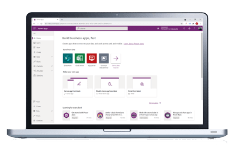Table of contents
Summary
Organizations that make project management practices a priority waste 28 times less money than those that don't.
One of the most significant ways that good project management can help companies avoid wasting money is by managing scope creep. Something that you've likely experienced in your work, whether you were aware of it or not.
It's a problem that impacts almost every project and can sneak up on you to become an issue before you realize what's happening. So what is a project manager's role here, and how can they work to manage scope creep?
In this post, we'll go over what scope creep is and tips for dealing with it in project management.
Keep reading to learn more.
What is Scope Creep?
Scope creep happens when new features, requests, or requirements are added to a project after it's already begun. It can be challenging to notice that it's happening before it's too late, and the project scope can suddenly seem much more extensive than initially agreed.
This usually starts with small changes that seem easy to make but add up quickly. Furthermore, these changes tend to happen without going through official channels and can impact every part of a project, including:
- Costs
- Schedule
- Resource allocation
- Stress levels
Following sound project management methodology and best practices can help manage this problem. As the person in charge of a project, project managers must pay close attention to how it is proceeding and any changes being made. The following are a few specific things project managers can do to keep scope creep under control.
Define the Project Scope
The first thing you should do to help manage scope creep is to clearly define the scope of a project and the project objectives at the very beginning. As a project manager, you must ensure that your team and the project stakeholders are on the same page and understand the project's desired outcome.
Communicating and getting on the same page early on in the process is great for risk management as it helps to avoid disagreements or confusion as the project progresses. It also helps to manage expectations of the final deliverable and when it will be finished.
Every person involved in the project should know exactly what needs to be done. This should include the clients. However, a considerable risk is that they won't completely understand what they want initially.
This makes it more likely that they will continuously change what they're asking for. Therefore, project managers should pay extra attention to these clients so they can make them happy without dealing with significant scope creep.
Create a Change Control Process
Even with the best plans and clearly defined project scope, changes are still likely to be made to the original plan. To help control this and keep any changes from getting out of hand, be sure to have a system in place for how any change requests will be handled and implemented.
This is called a change control process and typically requires a change request form to be filled out to change something about the project. In addition to having this protocol in place, you'll need to designate someone ahead of time whose responsibility it will be to review these forms and accept or reject the changes.
Use the Right Technology
Your change control process is one of the places where having the right project management software will give you a leg up. This is because specialized software will allow you to make changes and update the project plan easily.
The right project management software will make it much easier to keep track of your resources and communicate with your team members, whether you're on schedule or not. But you and your team must understand how to best use the software. If you or your team are struggling with technology, it may be worth investing in outside help to learn how.
Create a Detailed Project Schedule
Having a detailed schedule can be very helpful in managing the expectations of both your team and any clients. It lets everyone know what is happening and the stage the project is currently in.
A Gantt chart is often used to display the schedule. This will show what project tasks are to be completed each day, what work has already been done, and how long it took.
Having such a detailed schedule helps keep project teams on task and plan, which allows both avoid and recognize scope creep. Because if you have the scheduled tasks written down in front of you, it's easier to identify when many jobs are being done that are not on the original schedule.
Prioritize Transparency
Keeping open, transparent communication lines with your project team and clients is critical. Transparency with your team allows them to keep you updated on their work and if any additional work has been added to their plates without authorization.
Transparency is crucial when you realize that scope creep is happening. You will need to immediately bring this to the attention of your team and the project stakeholders to devise a plan to remedy it and keep everyone happy.
You'll likely need to work together to find a way to get back to the original scope of the project or to define a new but still manageable and properly compensated scope.
Scope Creep Review
Scope creep is a common project management risk that happens when changes are made to the project scope without any control procedure, like change requests. These changes can affect the project schedule, budget, costs, resource allocation, and milestones and goals.
Scope creep occurs when new project requirements are added after the project has started, that go against your scope statement. Often these changes are not properly reviewed, so the project team is expected to complete more tasks with the same resources. And yes, this certainly will affect your critical path.
If you don't manage your project scope, you could end up with never-ending changes. To control your project scope and avoid scope creep, you'll need a scope, change and risk management plans, as well as solid project management skills.
Scope Creep Example
Four-months into a software development project the project manager was tasked to deliver. Well into the planning phase several weeks into the project, one of the sponsors of the project requested a number of new pieces of functionality be added to the software. Project manager updates the project scope to include these items as requested, however, another sponsor requested additional changes.
The project manager correctly responded that these new features would be no problem at all, provided change request(s) were executed for the approved changes in scope, and, the timeline were adjusted and potentially more resources added to the project (depending on timeline requirements).
As the project progresses, it is obvious to stakeholders and sponsors the project is late. The project manager was not given authority to adjust the timeline or add resources. People are looking for deliverables that are not being completed in time.
The project manager explains the scope, timeline, and more was not realistic for what was being delivered. Simply put, the additional scope was jammed into the existing timeline and resources, however, it was not realistic.
Situations like this happen regularly across all types of projects. Sure, there are occasions where we can execute projects successfully even when scope creep occurs. However, don't try to be the accommodating project manager by allowing all sorts of additional deliverables be added to a project you are managing.
And above all, if you use a project management software product such as Microsoft Project, consider adequate training to ensure you are using the product efficiently. A little training can go a long way to helping you spend time management your project and not dealing with oddities happening in a software tool.
Start Managing Scope Creep Now
Scope creep is not easy to avoid, but it is possible to be aware of and manage it. Be sure to make it a priority to use sound project management principles to keep scope creep from getting out of control.
If you want to get better at using technology to manage and prevent scope creep, we can help! Contact us today.















